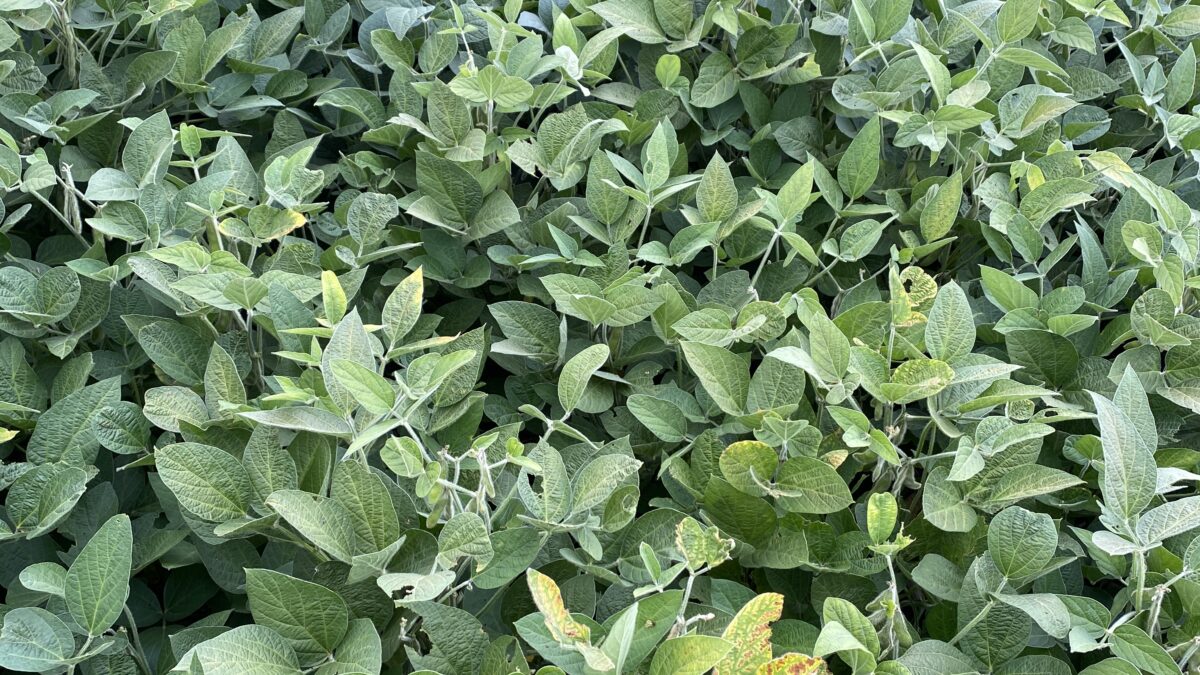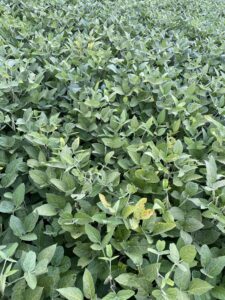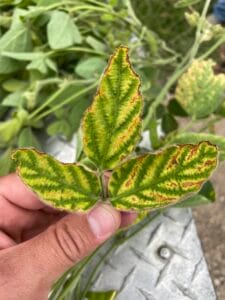Four Ways to Manage Sudden Death Syndrome’s Steady Creep North

Sudden Death Syndrome (SDS) is a fairly new fungal pathogen in our area that continues to spread north and west in recent years. For now, a line from Fergus Falls, MN, to Wyndmere, ND, seems to be the battlefront, south of that line the disease is much more common and north of that may have little to none.
Infection
Sudden Death Syndrome can infect plants early in the season through later vegetative growth stages. Shortly after germination, the fungi infect seedling roots and will remain asymptomatic until later in the season. When plants approach late reproductive phases and seed fill, visual symptoms will appear as toxins and will move from the fungi in the roots to the leaves. August is an ideal time to start scouting for symptoms.
Identification

Infected plants in a compacted part of the field with symptomology in 2022. These fields have had a history with the disease the last few years.
SDS can easily be confused with brown stem rot (BSR) and stem canker. However, BSR and stem canker only infect the stem, while SDS will damage both above-ground tissue and the roots. Additionally, SDS typically shows symptoms earlier in the season than BSR.
When scouting areas where you suspect BSR or SDS, split the stems of damaged plants. Both diseases can cause stem rot, but SDS will leave the pith white, while BSR will cause a brown center. If the central pith remains white, examine the roots to confirm SDS.
SDS also causes root rot that eats away at the laterals and taproot. Plants affected by root rot will easily pull out of the ground. If plants are dug up rather than pulled, rotting roots will be brown and mushy instead of healthy white. In the advanced stages of SDS, you might be able to spot blueish mold on the outside of the taproot.
Factors Favoring Infection
Cold, wet soils for two to four weeks after planting are conducive to SDS infection. These conditions slow seed germination and emergence while widening the window for infection. Compacted soil and poor drainage also encourage infection.
Additionally, there is a correlation between high soybean cyst nematode populations and risk for SDS infection. SCN weakens plants, and SCN root wounds offer an entry point for the fungus.
Management
 SDS can cause dramatic hits to yield and is difficult to manage but stacking management strategies will give you the best shot at protecting your yields.
SDS can cause dramatic hits to yield and is difficult to manage but stacking management strategies will give you the best shot at protecting your yields.
1. Genetics
The best management tool is genetic resistance. More and more genetic suppliers are working on building resistance to SDS as it spreads into new maturity zones. If you are in a high-risk area, we recommend stacking a high-tolerance SCN gene with SDS tolerance for the best protection.
2. Delayed Planting
While not an option for everyone, delaying soybean planting until soils are warmer (>55 deg F) also lowers the chances of infection. It is especially important in fields with a history of SDS. Early planting into cold soil heightens infection potential not only for SDS, but many other diseases.
3. Compaction Areas
Avoiding saturated and compacted soils also works great.
4. Crop Rotation
Crop rotation can help but it may be more effective with other diseases. Once the field is infected future outbreaks are possible.



